9+ Sample Health Care Action Plan
-

Health Care Action Plan Template
download now -
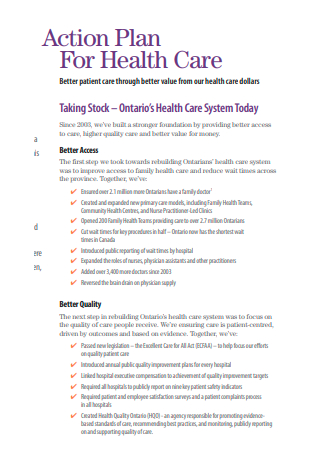
Basic Health Care Action Plan
download now -
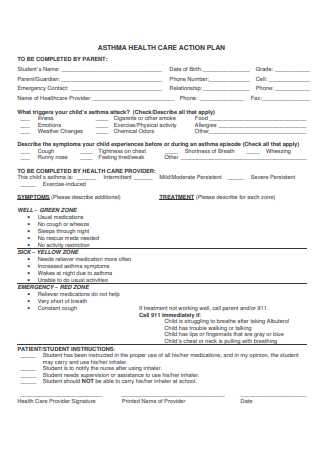
Asthma Health Care Action Plan
download now -

Health Care National Action Plan
download now -
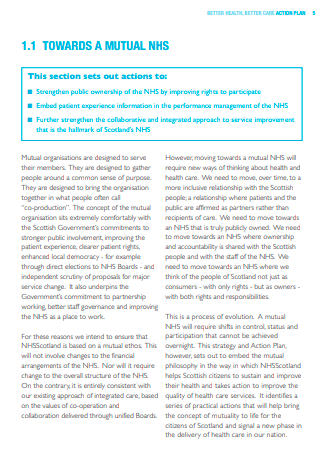
Health Care Action Plan Example
download now -

Home Health Care Action Plan
download now -

Health Care Action Plan in PDF
download now -
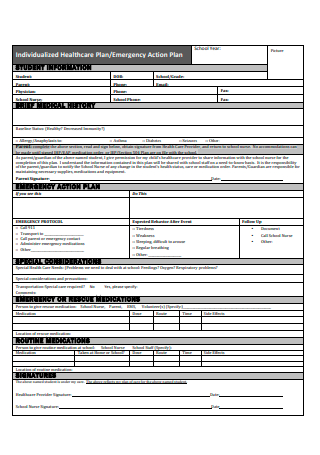
Health Care Emergency Action Plan
download now -
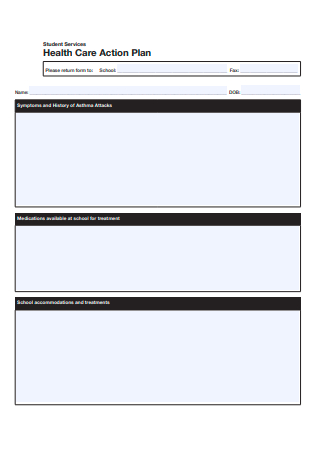
Formal Health Care Action Plan
download now -

Health Care Provider Action Improvement Plan
download now
FREE Health Care Action Plan s to Download
9+ Sample Health Care Action Plan
What is a Health Care Action Plan?
What are the Components of an Action Plan?
Why an Action Plan is Needed
What are Examples of Common Health Issues?
What are the Challenges Faced by Health Care?
How to Make a Health Care Action Plan
FAQs
What is the fundamental purpose of health care?
Who are the health care professionals?
What are the types of hospitals by ownership?
What is a Health Care Action Plan?
Health care is defined as the method of maintaining or improving someone’s health condition via prevention, treatment, and cure of diseases, illnesses, and injuries to people. It can also refer to the services provided to the communities by health care agents or professionals with the aim of promoting, maintaining, or restoring their health. A health care action plan serves as a simple health checklist that focuses on spelling out small but realistic steps that the patient being tended to must perform in order to achieve his or her health goal. Aside from changing dietary habits and activities, a health care action plan can also be made for a wide variety of goals, such as removing bad sleeping habits and stopping smoking and heavy drinking. For the action plan to be successful, it should be tailored to be patient-driven, specific, and realistic. Being realistic in making the action plan means that patients have very high confidence in it succeeding.
What are the Components of an Action Plan?
An effective action plan includes some of the following components (but are not limited to):
- A clear description of the goal
- Procedures that have to be carried out to achieve the said goal
- People in charge of carrying out each task (in the case of a health care action plan, this involves the health care agents and professionals)
- A timetable of the tasks, including deadlines and milestones
- Resources to be used in order to complete the task
- Measures to be taken for progress evaluation
Additionally, the goals that the patient has stated in the health care action plan also have to be SMART:
- S – Specific. It means that goals have to be focused on. The patient and the attending health care professional should know exactly what is to be achieved.
- M – Measurable. It means that goals are quantifiable. It helps provide a standard for comparison.
- A – Action-oriented. This means that the goals stated should have an activity that produces results.
- R – Realistic. It means that goals are practical and achievable.
- T – Time-targeted. It means that the goals have a deadline on when they should be accomplished or achieved.
Why an Action Plan is Needed
During the process of administering health care to a patient, unexpected incidents can happen. These are the reasons why a health care action plan is needed:
The focus of a health action plan is highlighting the key action points during the patient’s health check. A health care action plan should also summarize any other relevant information concerning the patient.
What are Examples of Common Health Issues?
In an ideal world, we humans would never even have to worry about something in our body suddenly going awry and out of shape. But as we know it, we don’t live in an ideal world. This is why health issues have been constantly affecting us since the beginning of our existence. Here are some common examples of them:
What are the Challenges Faced by Health Care?
Here are some challenges faced by the health care industry, particularly in the United States:
How to Make a Health Care Action Plan
A good and effective action plan addresses all the key issues, is clearly written, identifies priorities, targets, and outcomes, and is clearly focused towards the improvement of the patient. Here are procedures on how to make an effective action plan:
1. Define the patient’s end goal.
Analyze the patient’s situation and start to explore many possible solutions. You can also determine in this step if the patient is really ready to make a change in his routine in order to achieve the end goal. For example, if the patient is a heavy smoker or drinker, ask them if they are ready to slow down their drinking and smoking habits until it comes to the point where they completely stop doing it. If a patient is struggling with eating problems, you can provide a healthy meal plan for him or her. You can guide the patient in choosing his/her goal, but it is important that you do not take over.
2. List down the tasks to do.
When the patient has already chosen the goal, it is now time to list down the steps that he or she should take in order to achieve it. Make sure it is clear and concise, and that the task listed in the action plan is attainable. You can also assess the patient’s confidence in this step, to determine if he/she is capable of achieving the task listed. If you come across a difficult task, break it down into smaller, simpler steps. If the patient is not confident enough, work together to revise the steps.
3. Add the deadlines.
To make sure that the patient is on track and delivers on the task listed, add deadlines to the action plan. But before you do so, you must also consult with the patient and identify possible barriers or problems that may hinder the patient from completing the certain task on time.
4. Setting milestones.
By adding milestones to the health care action plan, it enables both the health care professional and the patient to have something to look forward to something and helps them maintain their motivation as they slowly but surely work their way up each task, even if the final one is a long way away. It’s also recommended to not bunch up milestone dates in the plan, and space them weeks, not days apart.
5. Follow-up with the patient.
Throughout the course of the patient performing the needed tasks that are listed in the action plan, it is also essential for the health care professional to provide a follow-up and evaluate the patient’s progress. You can mark the tasks that are completed, and tick them off the health care checklist. You can also point out and discuss with the patient if there are any unfinished tasks, so you can find possible solutions. Should a patient encounter any unforeseen difficulties in completing the task, modifications to that certain task can also be performed to ensure that it is completed and the patient gets closer to his or her goal.
FAQs
What is the fundamental purpose of health care?
The fundamental purpose of health care is to enhance someone’s quality of life by improving their health. It must focus on creating social profit in order to fulfill its respective promise to society. It also needs to be productive and earn a sufficient margin to continue serving the population and improve its services. Health care must also prioritize their mission over their margin.
Who are the health care professionals?
Since it is a team effort, there are many health care professionals, each with a different task. Some members of the health care team are doctors who diagnose diseases and the technicians who help them. Also, members of the health care team are the experts who have specialties in a particular field who help treat the diagnosed disease or disorder. They also care for the patient’s physical, emotional, and sometimes mental needs. Other team members include nurses, dentists, pharmacists, therapists and rehabilitation specialists, and the administrative and support staff.
What are the types of hospitals by ownership?
There are three of them. They are:
- Public Hospitals – These are government-owned and are funded by the general public. They are often heavily associated with medical schools and usually have no investors.
- Private Hospitals – also called for-profit hospitals, they are privately owned and usually have an investor. They usually offer more profitable services and usually they focus on efficiency in order to bring the costs down and maximize their profitability.
- Non-profit Hospitals – They are usually community-owned hospitals and their goal is to provide health care services to the community that they are in. Excess funds in these hospitals typically remain within and are usually used to invest in better equipment or research.
Having a health care action plan helps and ensures that the patient will achieve his or her goals, whether it would be a simple lifestyle change or a drastic one that can improve their quality of life. Having lifestyle or behavior change discussions with your patients ensures that proper action planning presents an opportunity for them to have concrete progress towards their goals. Writing a proper health care action plan takes solid research and planning. If you struggle to create one for yourself, then examples are provided above this article for you to have a look at.
